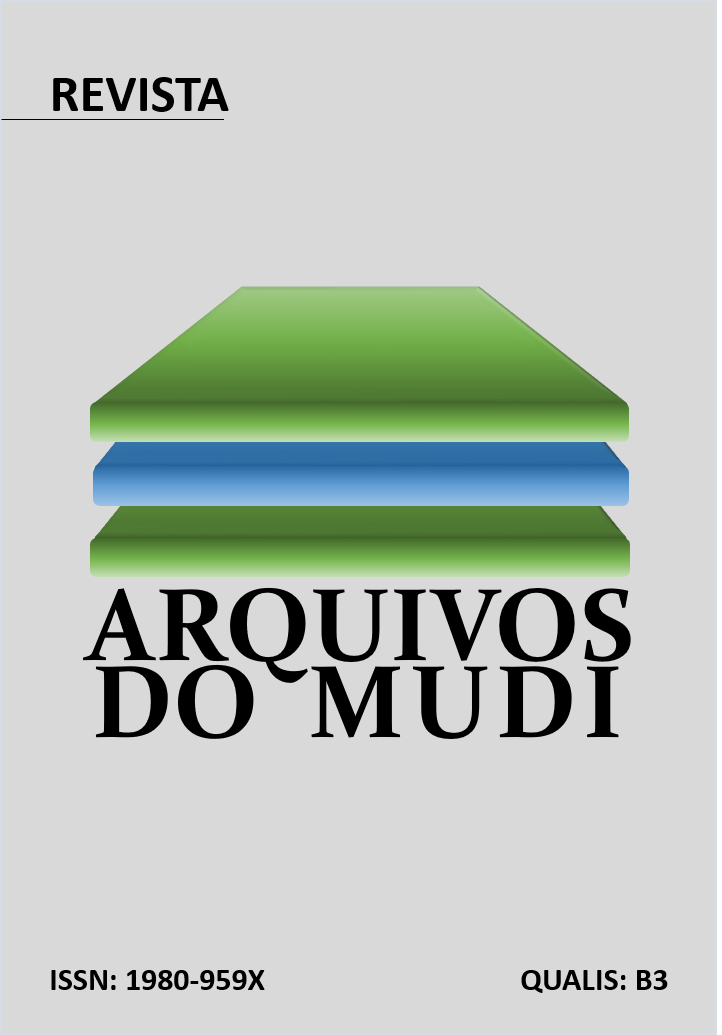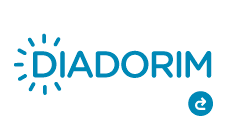A The evolution of human anatomy teaching: from traditional practices to modern technologies
Abstract
Introduction: the study of human anatomy is fundamental in the training of health professionals, providing a basis for understanding the structure and function of the body. Objective: this study aimed to analyze the evolution of anatomy teaching, highlighting the importance of traditional methods and new technologies of the 21st century. Methods: literature review in academic databases. Results: cadaver dissection and the use of illustrations have always been central to anatomical learning; however, with technological advances, new approaches have emerged, such as virtual reality, augmented reality, and digital simulations, which complement classical techniques and broaden the learning experience. Conclusions: it is concluded that the integration of traditional and technological methods promotes a balanced training, combining technical and humanistic aspects. This model qualifies the teaching-learning process, enhances the training of future health professionals, and contributes to improving the services provided to society.
Downloads
References
Estai M, Bunt S. Best teaching practices in anatomy education: A critical review. Ann Anat. 2016 Nov 1;208:151–7.
Iwanaga J, Muo EC, Tabira Y, Watanabe K, Tubbs SJ, D’Antoni A V, et al. Who really needs a Metaverse in anatomy education? A review with preliminary survey results. Clin Anat. 2023;36(1):77–82.
Turney BW. Anatomy in a modern medical curriculum. Ann R Coll Surg Engl. 2007 Feb;89(2):104–7.
Tortora GJ, Derrickson BH. Principles of anatomy and physiology. John wiley & sons; 2018.
Patra A, Asghar A, Chaudhary P, Ravi KS. Integration of innovative educational technologies in anatomy teaching: new normal in anatomy education. Surg Radiol Anat. 2022;44(1):25–32.
Kavvadia EM, Katsoula I, Angelis S, Filippou D. The anatomage table: A promising alternative in anatomy education. Cureus. 2023;15(8).
Kolla S, Elgawly M, Gaughan JP, Goldman E. Medical student perception of a virtual reality training module for anatomy education. Med Sci Educ. 2020;30(3):1201–10.
Chytas D, Salmas M, Demesticha T, Noussios G, Paraskevas G, Chrysanthou C, et al. A review of the use of virtual reality for teaching radiology in conjunction with anatomy. Cureus. 2021;13(12).
Jeon JH. Lascaux Cave Painting: The Earliest Drawing of Gastrointestinal Anatomy and Physiology? J Korean Med Sci. 2024;39(3).
Ajileye AB, Esan EO, Adeyemi OA. Human Embalming Techniques: A Review. Am J Biomed Sci. 2018 Apr;82–95.
Metwaly AM, Ghoneim MM, Eissa IH, Elsehemy IA, Mostafa AE, Hegazy MM, et al. Traditional ancient Egyptian medicine: A review. Vol. 28, Saudi Journal of Biological Sciences. Elsevier B.V.; 2021. p. 5823–32.
Crivellato E, Ribatti D. A portrait of Aristotle as an anatomist: Historical article. Vol. 20, Clinical Anatomy. Wiley-Liss Inc.; 2007. p. 447–85.
Stok F. Medical Sects. In: Oxford Handbook of Science and Medicine in the Classical World. Oxford University Press; 2018. p. 358–80.
Alghamdi MA, Ziermann JM, Diogo R. An untold story: The important contributions of Muslim scholars for the understanding of human anatomy. Vol. 300, Anatomical Record. Blackwell Publishing Inc.; 2017. p. 986–1008.
Nutton V. Galen: a thinking doctor in imperial Rome. Routledge; 2020.
Kristeller PO. The School of Salerno: Its development and its contribution to the history of learning. Bull Hist Med. 1945;17(2):138–94.
Underwood EA. The early teaching of anatomy at Padua, with special reference to a model of the Padua anatomical theatre. Ann Sci. 1963;19(1):1–26.
Zampieri F, ElMaghawry M, Zanatta A, Thiene G. Andreas Vesalius: Celebrating 500 years of dissecting nature. Glob Cardiol Sci Pract. 2015;2015(5).
Mitchell PD, Boston C, Chamberlain AT, Chaplin S, Chauhan V, Evans J, et al. The study of anatomy in England from 1700 to the early 20th century. J Anat. 2011;219(2):91–9.
Wells J. Burke and Hare: The Ghoulish Duo that Advanced the Study of Human Anatomy. Vulcan Hist Rev. 2018;22(2018):8.
Musiał A, Gryglewski R, Kielczewski S, Loukas M, Wajda J. Formalin use in anatomical and histological science in the 19th and 20th centuries. Folia Med Cracov. 2016;56(3).
Standring S, Ellis H, Healy J, Johnson D, Williams A, Collins P, et al. Gray’s anatomy: the anatomical basis of clinical practice. Am J Neuroradiol. 2005;26(10):2703.
Röntgen WC. On a new kind of rays. Science (80- ). 1896;3(59):227–31.
Hsieh J, Flohr T. Computed tomography recent history and future perspectives. J Med Imaging. 2021;8(5):52109.
Surasi DS, Bhambhvani P, Baldwin JA, Almodovar SE, O’Malley JP. 18F-FDG PET and PET/CT patient preparation: a review of the literature. J Nucl Med Technol. 2014;42(1):5–13.
Saalfeld P, Schmeier A, D’Hanis W, Rothkötter HJ, Preim B. Student and teacher meet in a shared virtual reality: a one-on-one tutoring system for anatomy education. arXiv Prepr arXiv201107926. 2020;
Uribe J, Harmon D, Laguna B, Courtier J. Augmented-Reality Enhanced Anatomy Learning (A-REAL): Assessing the utility of 3D holographic models for anatomy education. Ann 3D Print Med. 2023;9:100090.
Ghosh SK. Human cadaveric dissection: a historical account from ancient Greece to the modern era. Anat Cell Biol. 2015;48(3):153–69.
Ghosh SK. Cadaveric dissection as an educational tool for anatomical sciences in the 21st century. Anat Sci Educ. 2017;10(3):286–99.
Dissabandara LO, Nirthanan SN, Khoo TK, Tedman R. Role of cadaveric dissections in modern medical curricula: a study on student perceptions. Anat Cell Biol. 2015;48(3):205.
Cornwall J, Hildebrandt S, Champney TH, Goodman K. Ethical concerns surrounding artificial intelligence in anatomy education: Should AI human body simulations replace donors in the dissection room? Anat Sci Educ. 2024;17(5):937–43.
Souza AD, Kotian SR, Pandey AK, Rao P, Kalthur SG. Cadaver as a first teacher: A module to learn the ethics and values of cadaveric dissection. J Taibah Univ Med Sci. 2020;15(2):94–101.
Ufelle AC, Lee AG, Kimberly Forrest MPH. Health effects and factors affecting formaldehyde exposure among students in a cadaver laboratory. J Environ Health. 2022;84(6):14–21.
Habicht JL, Kiessling C, Winkelmann A. Bodies for anatomy education in medical schools: an overview of the sources of cadavers worldwide. Acad Med. 2018;93(9):1293–300.
Rosse C. Anatomy atlases. Clin Anat Off J Am Assoc Clin Anat Br Assoc Clin Anat. 1999;12(4):293–9.
Drake RL, Vogl AW, Mitchell AWM, Tibbitts R, Richardson P. Gray’s Atlas of Anatomy: Gray’s Atlas of Anatomy E-Book. Elsevier Health Sciences; 2020.
Netter FH. Netter Atlas of Human Anatomy: Classic Regional Approach-Ebook. Elsevier Health Sciences; 2022.
Chickness JP, Trautman-Buckley KM, Evey K, Labranche L. Novel development of a 3D digital mediastinum model for anatomy education. Transl Res Anat. 2022;26:100158.
da Cruz Torquato M, Menezes JM, Belchior G, Mazzotti FP, Bittar JS, Dos Santos GGR, et al. Virtual reality as a complementary learning tool in anatomy education for medical students. Med Sci Educ. 2023;33(2):507–16.
Grignon B, Oldrini G, Walter F. Teaching medical anatomy: what is the role of imaging today? Surg Radiol Anat. 2016;38:253–60.
Heptonstall NB, Ali T, Mankad K. Integrating radiology and anatomy teaching in medical education in the UK—the evidence, current trends, and future scope. Acad Radiol. 2016;23(4):521–6.
Clebis NK, Chavarria RTO, Rocha LC de A, Neto MF da CP, Paula JPC, Pellizzon E, et al. Gamificação do ensino teórico de anatomia para o curso de farmácia da UFRN na pandemia da COVID-19: relato de experiência. Arq do Mudi. 2021;25(2):14–26.
Miltykh I, Kafarov ES, Covantsev S, Dadashev AS, Skarlis AA, Zenin OK. A new dimension in medical education: Virtual reality in anatomy during COVID‐19 pandemic. Clin Anat. 2023;36(7):1007–15.
Sinou N, Sinou N, Filippou D. Virtual reality and augmented reality in anatomy education during COVID-19 pandemic. Cureus. 2023;15(2).
Nakai K, Terada S, Takahara A, Hage D, Tubbs RS, Iwanaga J. Anatomy education for medical students in a virtual reality workspace: A pilot study. Clin Anat. 2022;35(1):40–4.
Alasmari WA. Medical students’ feedback of applying the virtual dissection table (anatomage) in learning anatomy: a cross-sectional descriptive study. Adv Med Educ Pract. 2021;1303–7.
Krishnamurthy K, Selvaraj N, Gupta P, Cyriac B, Dhurairaj P, Abdullah A, et al. Benefits of gamification in medical education. Clin Anat. 2022;35(6):795–807.
Castellano MS, Contreras‐McKay I, Neyem A, Farfán E, Inzunza O, Ottone NE, et al. Empowering human anatomy education through gamification and artificial intelligence: An innovative approach to knowledge appropriation. Clin Anat. 2024;37(1):12–24.
Ilgaz HB, Çelik Z. The significance of artificial intelligence platforms in anatomy education: an experience with ChatGPT and Google Bard. Cureus. 2023;15(9).
DECLARAÇÃO DE ORIGINALIDADE E DIREITOS AUTORAIS
Declaro que o presente artigo é original, não tendo sido submetido à publicação em qualquer outro periódico nacional ou internacional, quer seja em parte ou em sua totalidade.
Os direitos autorais pertencem exclusivamente aos autores. Os direitos de licenciamento utilizados pelo periódico é a licença Creative Commons Attribution 4.0 (CC BY ): são permitidos o acompartilhamento (cópia e distribuição do material em qualqer meio ou formato) e adaptação (remix, transformação e criação de material a partir do conteúdo assim licenciado para quaisquer fins, inclusive comerciais.

Recomenda-se a leitura desse link para maiores informações sobre o tema: fornecimento de créditos e referências de forma correta, entre outros detalhes cruciais para uso adequado do material licenciado.

















